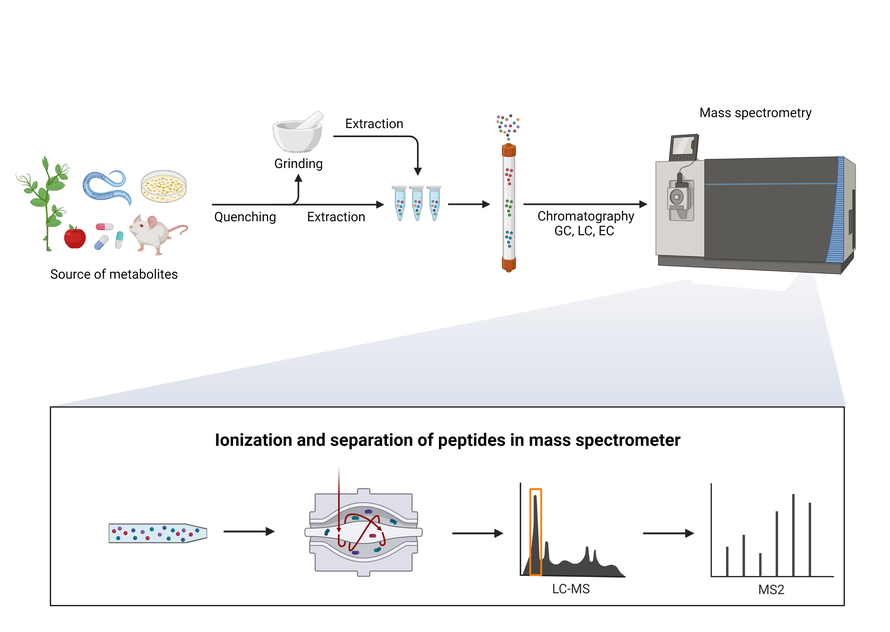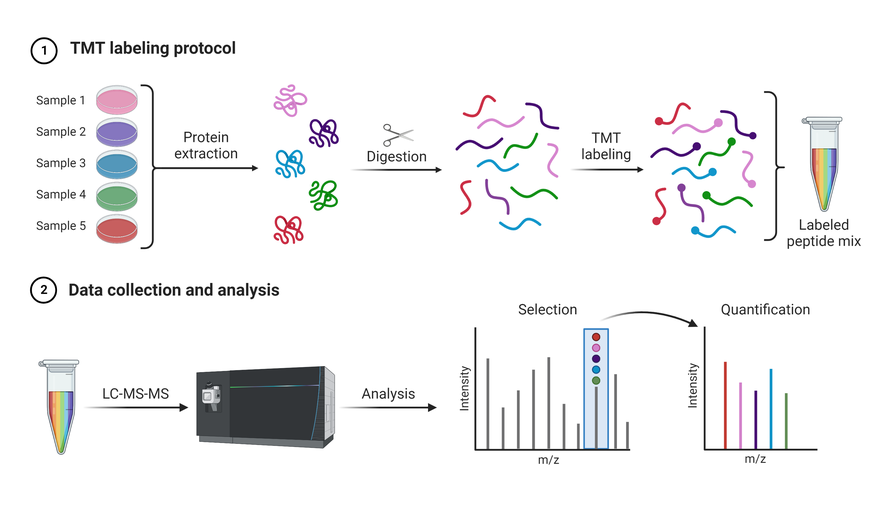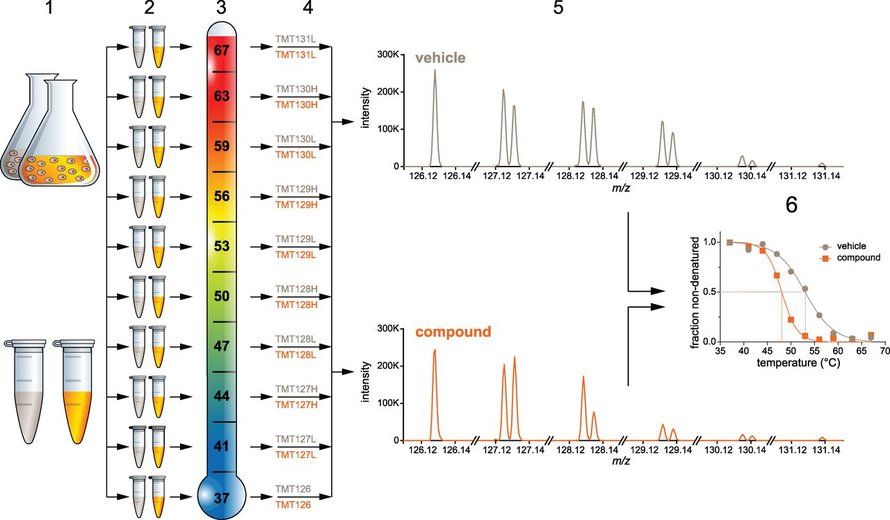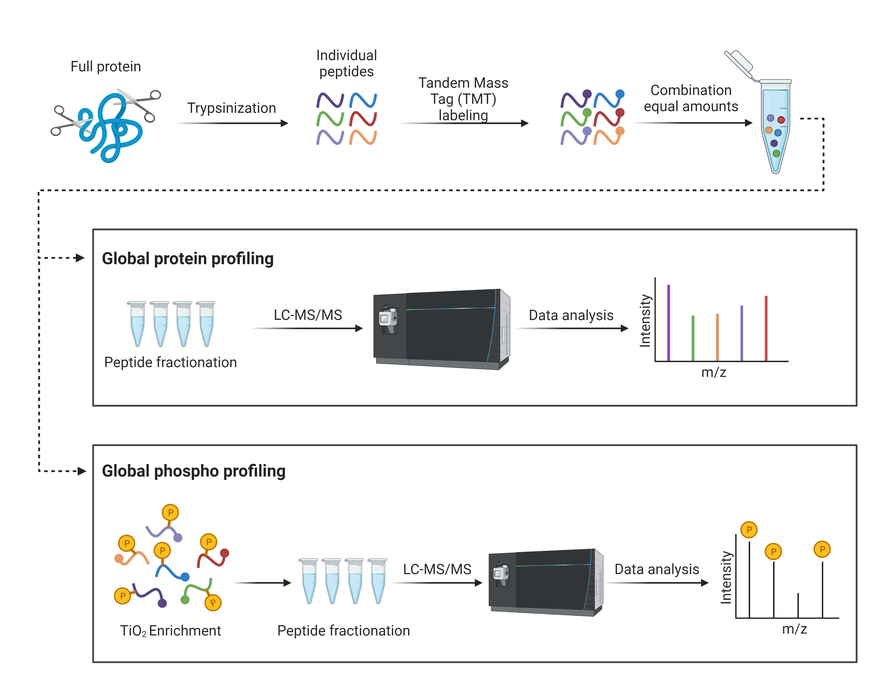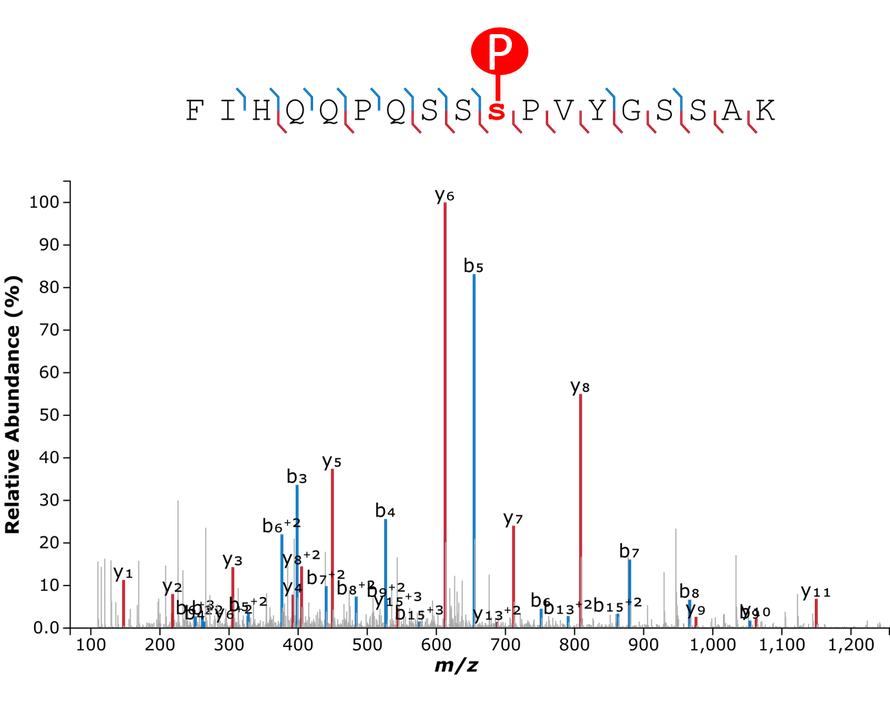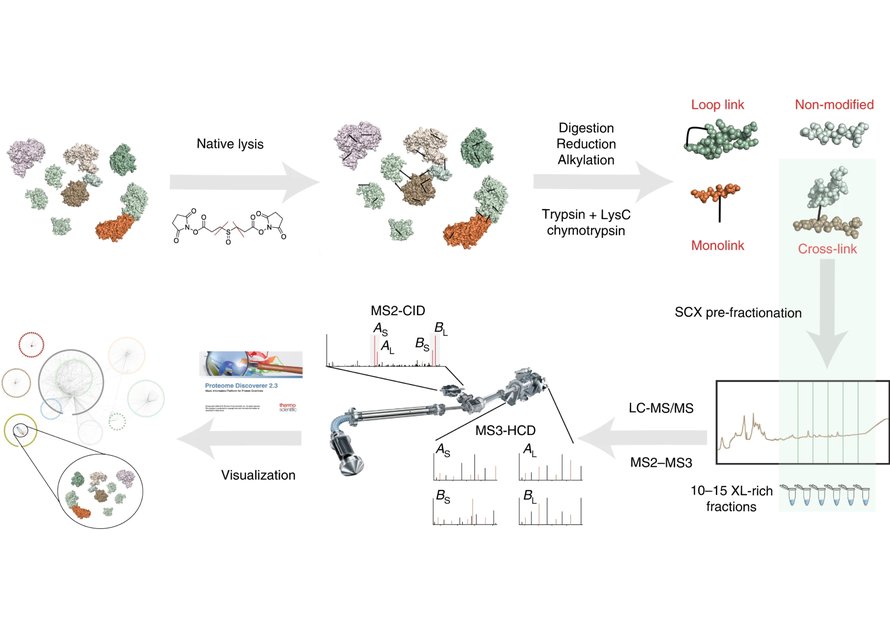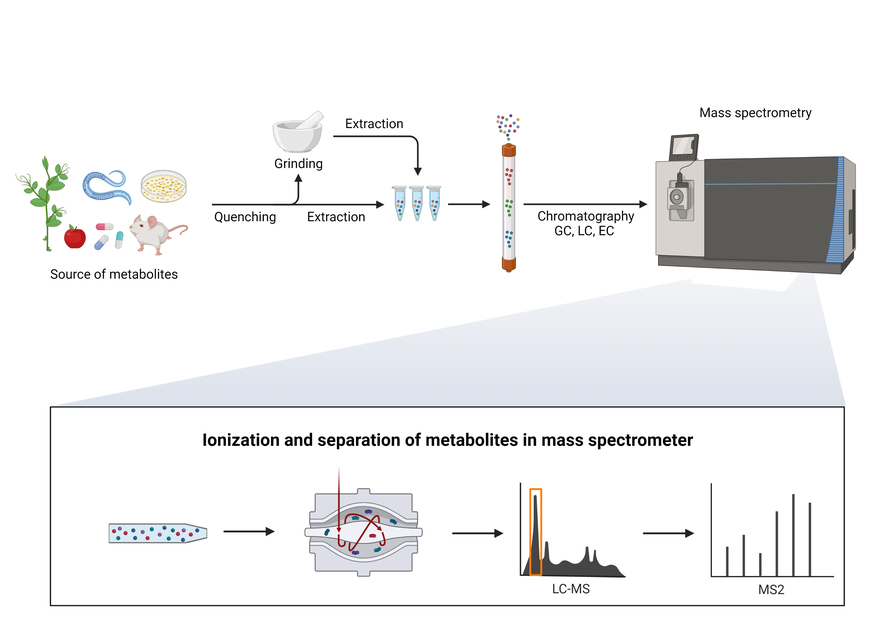Approach
PEL offer a wide range of scientific expertise and technical capabilities applicable to drug discovery. At PEL, we provide a wide range of approaches, each of which is structured to reveal the mechanism of action of cancer and to identify potential unique pharmacodynamic biomarkers that can be tracked through clinical trials:
Label-free quantitative proteomics. This approach identifies how a cancer drug causes differentially expressed proteins. Identifying these protein biomarkers makes it possible to track the effects of a drug in clinical trials as well as in the experimental context. These proteins and their pathways are comprehensively identified and analyzed using label-free quantification (LFQ), a proteomics method that uses mass spectrometry to reveal relative quantities of proteins without isotope labeling.
A typical bottom-up proteomics workflow. Created from BioRender.
Check our previous publications using label-free quantitation.
Tandem mass tag (TMT)-based quantitative proteomics. TMT-based quantitative proteomics A complimentary approach to label-free quantitative proteomics, this process uses a chemical label, tandem mass tag (TMT), as a reagent with samples of drug-treated cells. Proteomic analysis of cells labeled with TMT allows us to identify and quantify as many as 7,000 to 8,000 proteins.
A typical TMT workflow for quantitative proteomics. Created from Biorender.com.
Target and off-target identifications using proteomics methods. During clinical trials of a cancer drug, it is critical to know whether the concentration of the drug is sufficient to engage the intended protein target. It is equally important to know the potential off-targets that are essential for certain functions. We carry out target identifications using multiple TMT-based quantitative proteomics methods. These include thermal proteome profiling (TPP), limited protein proteolysis mass spectrometry (LIPMS), and solvent protein profiling (SPP).
A typical TPP workflow. Adopted from Tracking cancer drugs in living cells by thermal profiling of the proteome | Science.
Check here for our previous publication on PISA, a simplified technique of TPP.
Post-translational modification (PTM) analysis. We use mass spectrometry and other analytic tools to detect post-translational modification (PTM) of proteins (i. e. phosphorylation): that is, how proteins may be altered by the addition, modification, or removal of functional groups.
A typical workflow for phospho-proteomics.
Identification of phosphorylation sites using MS fragmentation.
Protein crosslink analysis. Crosslinking-mass spectrometry (XL-MS) utilizes chemical crosslinkers (i.e. DSSO) to crosslink proteins with close proximity with each other. XL-MS provides valuable information about structures of proteins and protein complexes, as well as protein-protein interactions (PPI).
XL-MS workflow. Adopted from Efficient and robust proteome-wide approaches for cross-linking mass spectrometry | Nature Protocols.
Intact (Top-down) protein analysis. Emerging technologies make it possible to analyze large molecules such as proteins without first breaking them down into smaller constituent parts. This approach uses mass spectrometry to accurately measure the total mass of an intact protein molecule, making it a great tool to analyze different modified forms of the proteins (termed proteoforms).
Top-down proteomics workflow. Adopted from Top-down mass spectrometry : Recent developments, applications and perspectives - Analyst.
Small molecules/metabolites analysis. We use mass spectrometry to assess the abundance of small molecules (including potential therapeutics) and metabolites in complex biological mixture.
Metabolomics workflow. Created from Biorender.com.
Connect With Us
Stay up to date on the latest from PEL.

